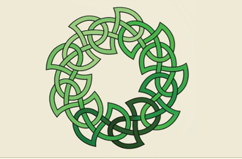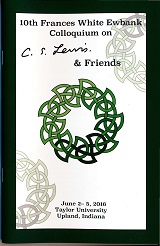Event Title
Paper Session 5-C: Williams and Friends (2)
Location
Euler 118
Start Date
4-6-2016 9:15 AM
Description
"'It Was Allowed to One': C. S. Lewis on the Practice of Substitution" - Andrew C. Stout
Lewis was a great promoter of his literary friends. This is true of his friend Charles Williams, but it is also true that Lewis appropriated significant elements of Williams's spiritual vision. In particular, Lewis was heavily influenced by Williams's development of the spiritual practice of "substitution," the practice of bearing another's fear, anxiety, or physical illness. Lewis corroborated the legitimacy of this practice in Williams's personal life, depicted and developed it in Till We Have Faces, experimented with it during his wife's illness, and came to question and refocus it in A Grief Observed. Lewis' settled legacy and credibility as a spiritual, theological, and literary authority make his appropriation and critique of substitution important for the ongoing evaluation of Williams's own legacy and credibility.
"Beings of Magic: A Comparison of Saruman the White in Tolkien's The Lord of The Rings and Simon the Clerk in Williams' All Hallows' Eve" - Kathryne Hall
"A Native Language in a Strange Country: Death and Rebirth in the Friendship of Charles Williams and C. S. Lewis" - Jennifer Raimundo
The friendship between Charles Williams and C. S. Lewis is a fascinating relationship. While the influence of these two men on each other provides excellent material for study, examining what brought them together in the first place must be an equally revealing inquiry. A flurry of letters inspired by their respective admiration of The Allegory of Love (1936) and The Place of the Lion (1931) began in 1936, during which Lewis tells Williams, "...[W]e touch here: the death and re-birth motive being of the very essence of my kind of romanticism." In order to better grasp what sparked the friendship between Williams and Lewis, this paper observes what The Allegory of Love and The Place of the Lion have to say about death and rebirth, and then considers how this concept established the literary and personal relationship between these two great authors. The paper will finally study the differences between Williams and Lewis' expression of death and rebirth in light of their friendship.
Event Type
Paper
Paper Session 5-C: Williams and Friends (2)
Euler 118
"'It Was Allowed to One': C. S. Lewis on the Practice of Substitution" - Andrew C. Stout
Lewis was a great promoter of his literary friends. This is true of his friend Charles Williams, but it is also true that Lewis appropriated significant elements of Williams's spiritual vision. In particular, Lewis was heavily influenced by Williams's development of the spiritual practice of "substitution," the practice of bearing another's fear, anxiety, or physical illness. Lewis corroborated the legitimacy of this practice in Williams's personal life, depicted and developed it in Till We Have Faces, experimented with it during his wife's illness, and came to question and refocus it in A Grief Observed. Lewis' settled legacy and credibility as a spiritual, theological, and literary authority make his appropriation and critique of substitution important for the ongoing evaluation of Williams's own legacy and credibility.
"Beings of Magic: A Comparison of Saruman the White in Tolkien's The Lord of The Rings and Simon the Clerk in Williams' All Hallows' Eve" - Kathryne Hall
"A Native Language in a Strange Country: Death and Rebirth in the Friendship of Charles Williams and C. S. Lewis" - Jennifer Raimundo
The friendship between Charles Williams and C. S. Lewis is a fascinating relationship. While the influence of these two men on each other provides excellent material for study, examining what brought them together in the first place must be an equally revealing inquiry. A flurry of letters inspired by their respective admiration of The Allegory of Love (1936) and The Place of the Lion (1931) began in 1936, during which Lewis tells Williams, "...[W]e touch here: the death and re-birth motive being of the very essence of my kind of romanticism." In order to better grasp what sparked the friendship between Williams and Lewis, this paper observes what The Allegory of Love and The Place of the Lion have to say about death and rebirth, and then considers how this concept established the literary and personal relationship between these two great authors. The paper will finally study the differences between Williams and Lewis' expression of death and rebirth in light of their friendship.


